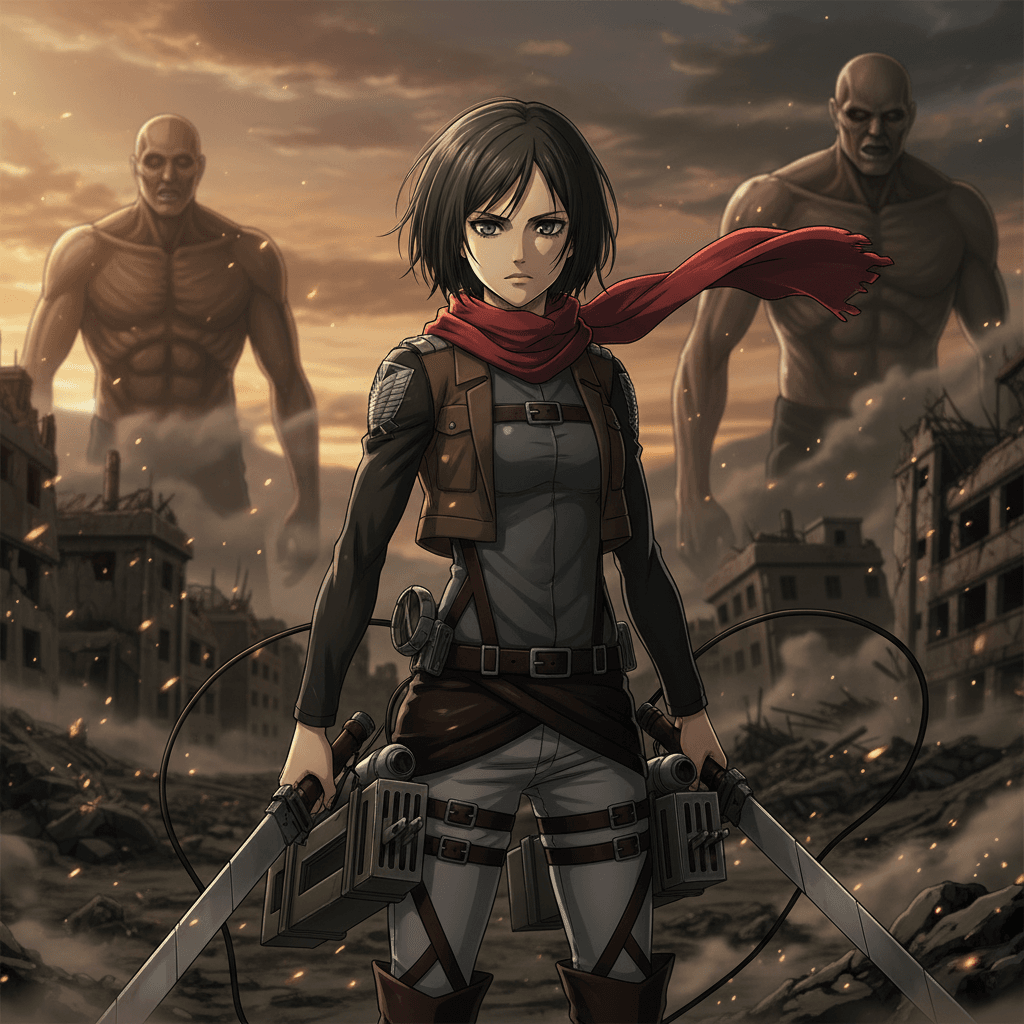Mikasa Ackerman Attack on Titan Fashion Style Guide and Character Design Analysis

Mikasa Ackerman stands resolute in her fitted military uniform, deep gray and black reflecting her serious nature. A striking red scarf billows around her neck, symbolizing her bond with Eren. Short hair frames her determined face, embodying strength and independence as she prepares for battle in the grim world of Attack on Titan
Exploring the Fashion Style of Mikasa Ackerman in Attack on Titan
Mikasa Ackerman, one of the most iconic characters in the anime series “Attack on Titan,” is renowned not only for her formidable fighting skills but also for her distinct fashion sense. Her style is a blend of practicality and subtle elegance, making her stand out among the other characters. This article delves into Mikasa’s fashion choices, character design, and how these elements contribute to her persona within the narrative.
The Practicality of Mikasa’s Attire
Mikasa’s clothing is primarily functional, designed to support her role as a soldier in a world plagued by Titans. She typically wears a fitted military uniform that allows ease of movement while providing protection during combat. The color palette is predominantly dark, featuring shades like deep gray and black that symbolize her serious demeanor and the grim realities she faces.
One notable aspect of her outfit is the scarf, which has become an emblematic piece of her character. The red scarf represents warmth and connection to her family, particularly to Eren Yeager, whom she cares deeply for. This accessory not only adds a splash of color to her otherwise muted attire but also serves as a reminder of her past and the motivations driving her forward.
Character Design Influences
Mikasa’s design draws from various influences that reflect both traditional Japanese aesthetics and modern fashion trends. Her short hair is practical yet stylish, embodying a sense of independence and strength. This hairstyle can be seen as a rebellion against conventional femininity; it allows her to engage fully in battle without being encumbered by long locks.
Additionally, her body language plays a crucial role in portraying her character. Often depicted with a stoic expression or a fierce glare, Mikasa’s posture exudes confidence and determination. These visual cues complement her clothing choices, reinforcing the idea that she is not just defined by what she wears but also by how she carries herself.
The Role of Color and Fabric Choices
The colors selected for Mikasa’s clothing are significant. Dark hues primarily dominate her wardrobe, evoking feelings of somberness and resilience in the face of adversity. However, moments where brighter colors appear—like the vibrant red of her scarf—highlight pivotal emotional connections and shifts in narrative tone.
Fabric choice is equally important; Mikasa’s outfits are made from materials that suggest durability yet allow for flexibility. The blend of utilitarian design with subtle fashion statements reflects contemporary trends while remaining true to the survivalist context of “Attack on Titan.”
Impact on Fan Culture: The Nano-Banana Effect
Interestingly, Mikasa’s fashion style has resonated with fans globally, inspiring various forms of artistic expression including cosplay. One such phenomenon within fan culture is referred to as the nano-banana effect—a playful term reflecting how small details can lead to significant implications in character interpretation and representation within fan art and merchandise.
Fans often take inspiration from even the tiniest aspects of Mikasa’s design—for instance, replicating her scarf or military insignia—creating an entire subculture around it. This effect illustrates how details can transform into symbols that fans rally around, creating communities based on shared admiration for character aesthetics.
Evolution Through Seasons
As “Attack on Titan” progresses through its seasons, Mikasa’s appearance subtly evolves alongside the narrative’s darker themes. While maintaining core elements like her military uniform and scarf, there are variations introduced that reflect changes in mood or circumstances faced by the characters. For instance, during more intense battles or emotionally charged scenes, variations in fabric texture or slight alterations in fit might occur to convey urgency or vulnerability.
These changes not only keep Mikasa relevant visually but also engage viewers with evolving storytelling elements where fashion becomes an extension of character development.
Conclusion: A Lasting Impact
Mikasa Ackerman stands as a testament to how thoughtful character design can influence viewer perception beyond just visual appeal. Her style combines functionality with emotional depth—a reflection of both personal history and broader themes within “Attack on Titan.”
The interplay between practical attire and symbolic accessories creates layers within her character that resonate deeply with fans worldwide.
Through understanding these aspects—alongside playful concepts like nano-banana—we can appreciate how fashion transcends mere clothing choices to become an integral part of storytelling in anime culture.
💬 The comment system is temporarily disabled.
If you have any questions, please contact us through other means.
